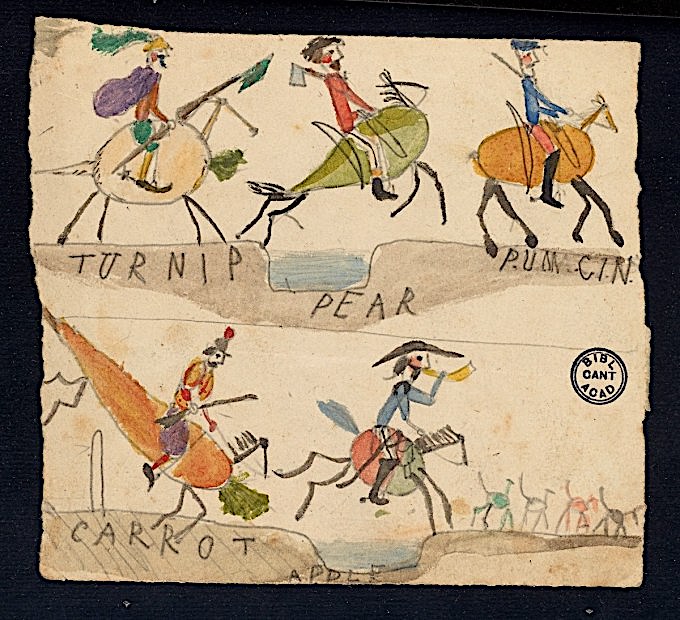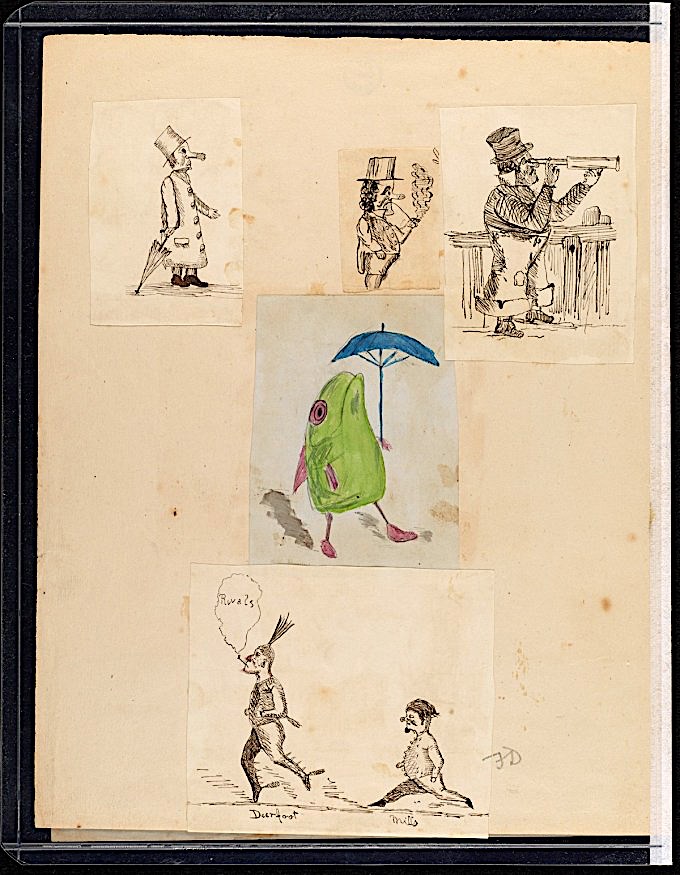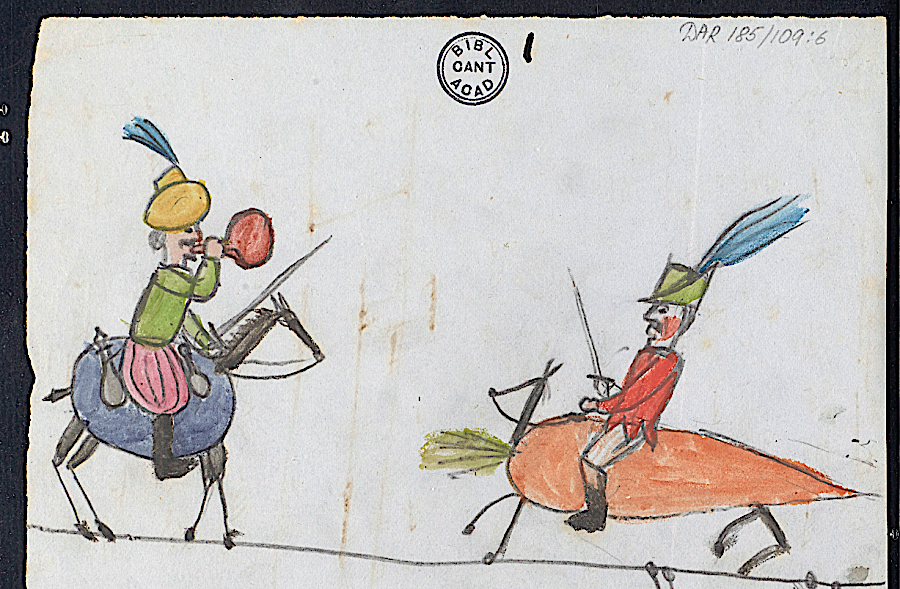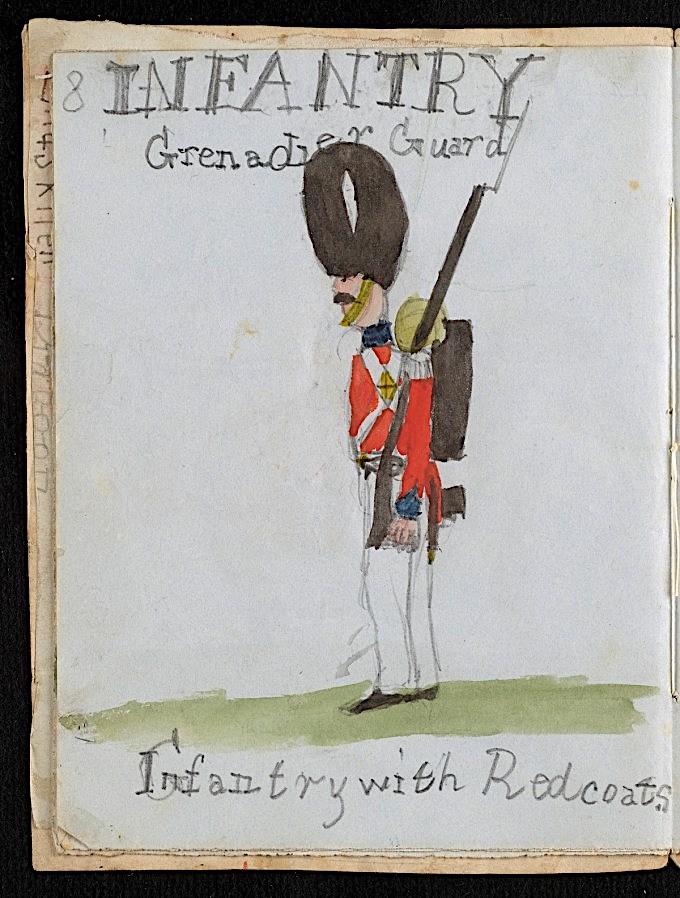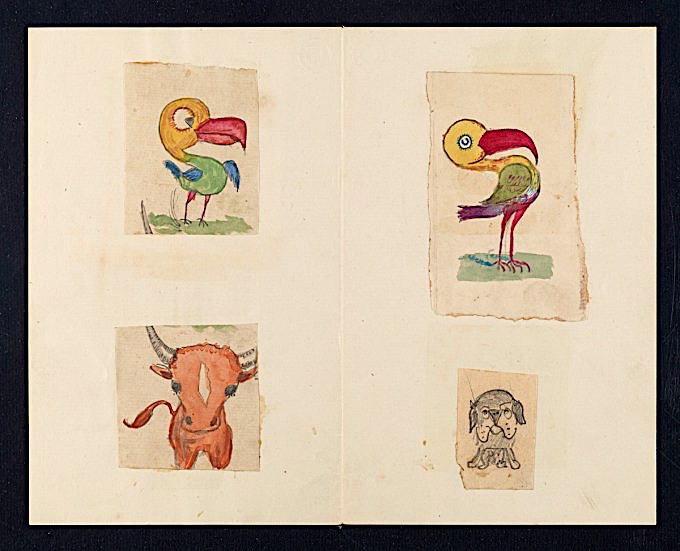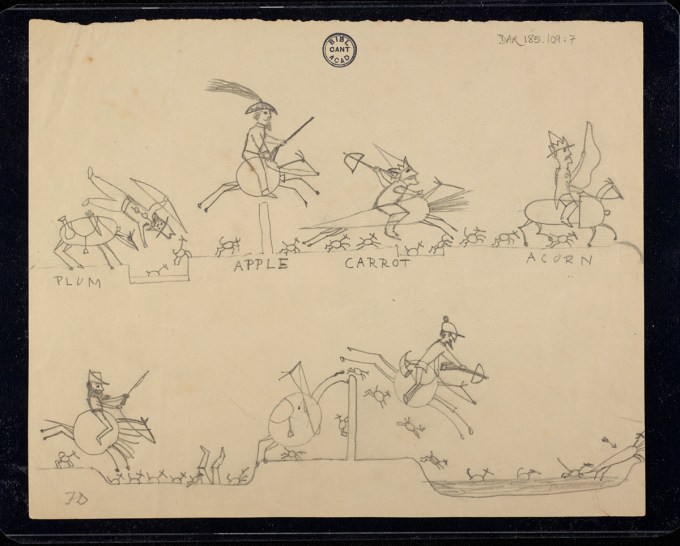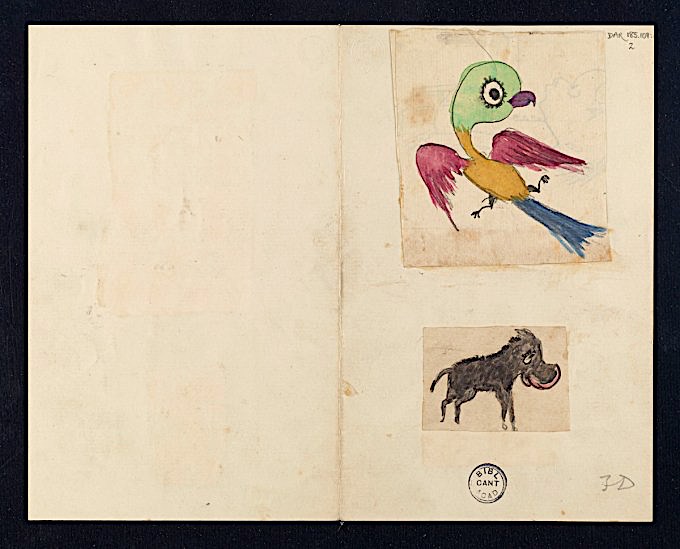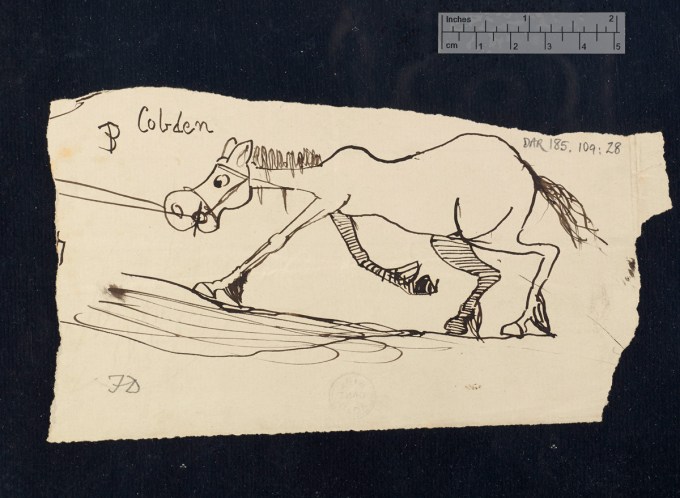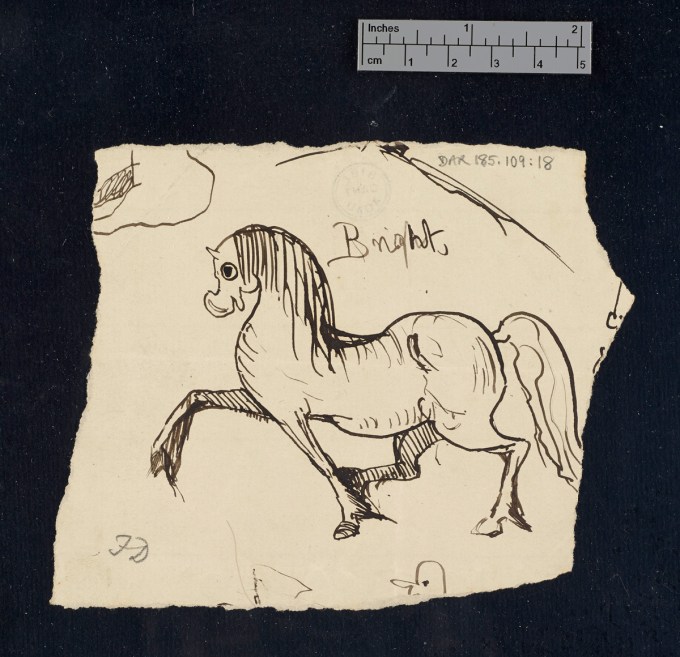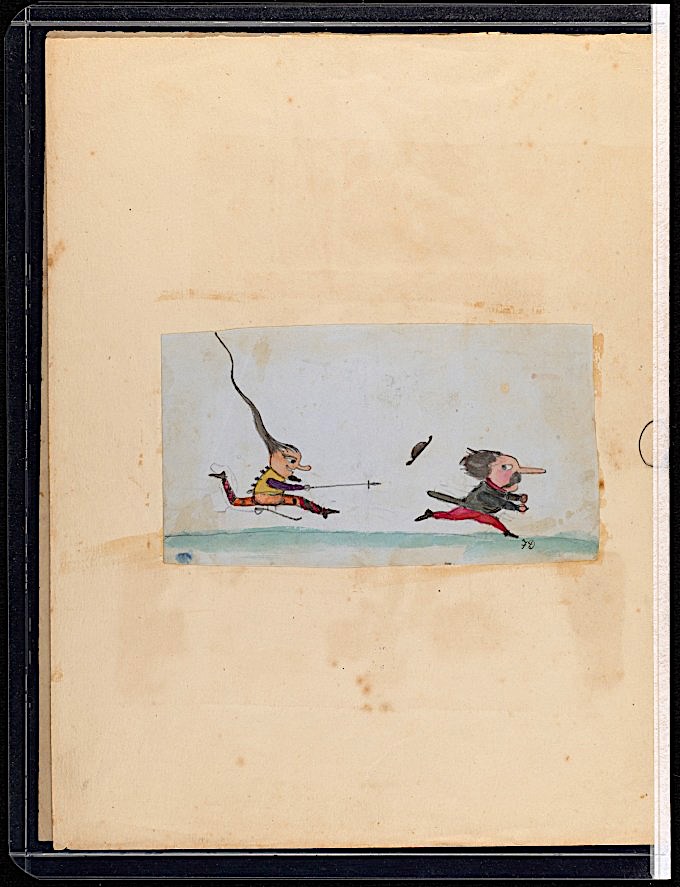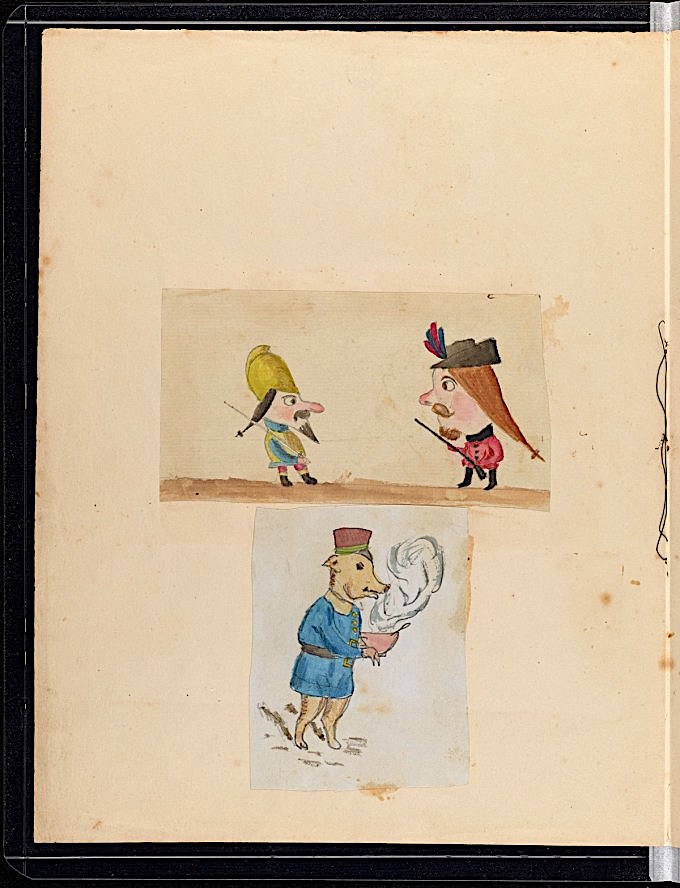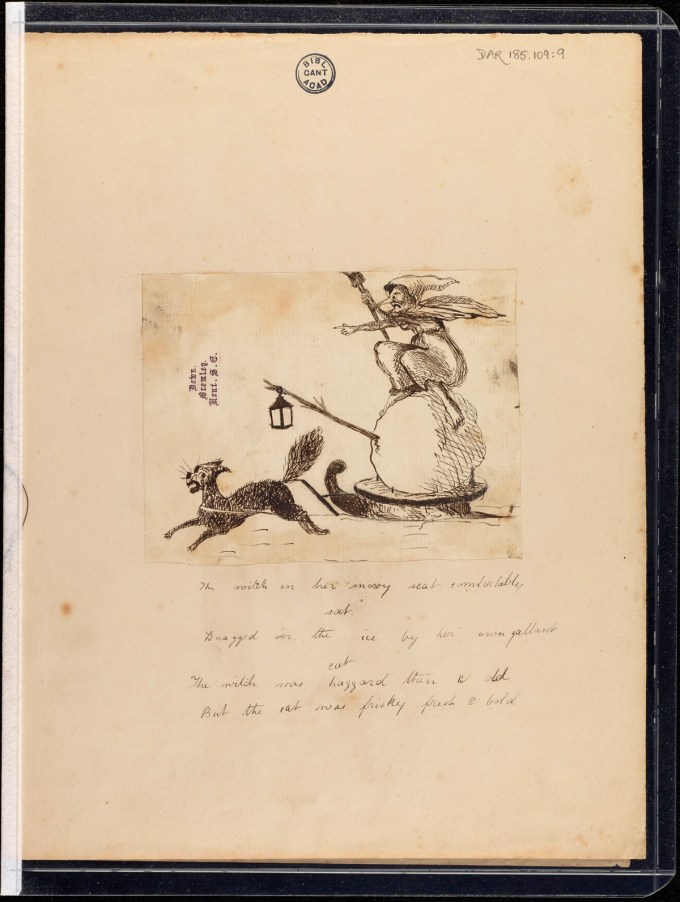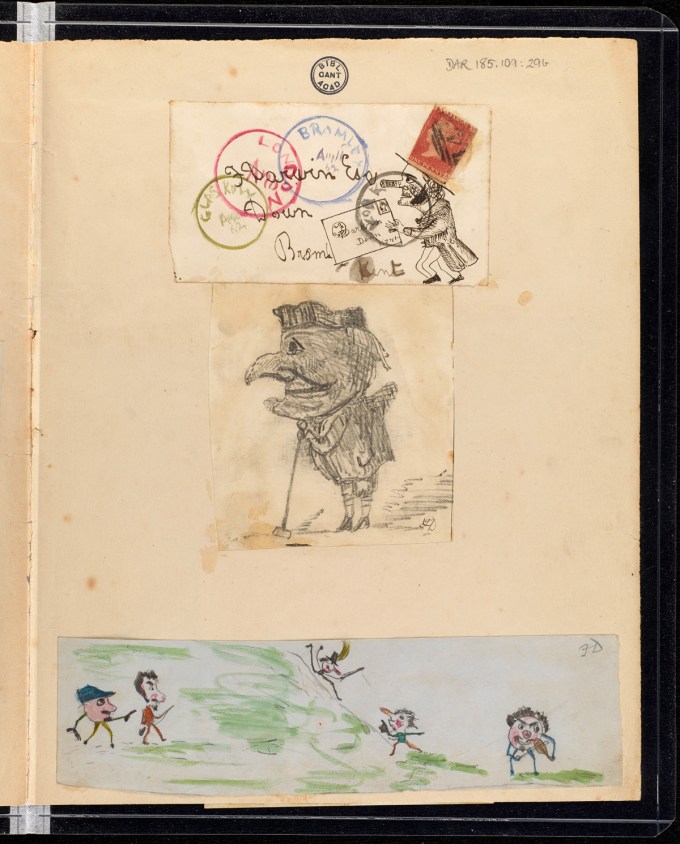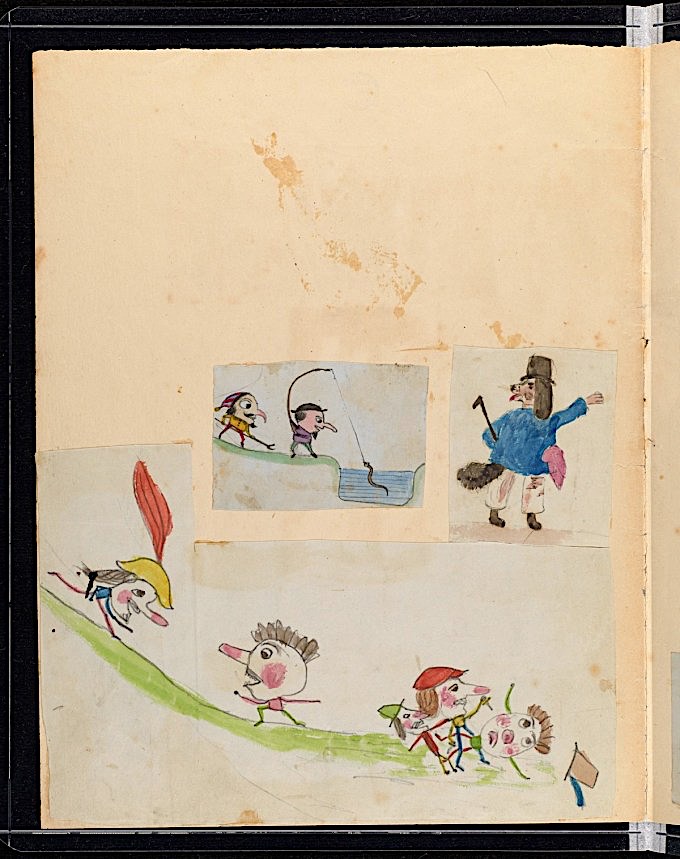[Most Recent Entries] [Calendar View]
Tuesday, January 14th, 2025
| Time | Event |
| 7:10a | Discover the Playful Drawings That Charles Darwin’s Children Left on His Manuscripts
Charles Darwin’s work on heredity was partly driven by tragic losses in his own family. Darwin had married his first cousin, Emma, and “wondered if his close genetic relation to his wife had had an ill impact on his children’s health, three (of 10) of whom died before the age of 11,” Katherine Harmon writes at Scientific American. (His suspicions, researchers surmise, may have been correct.) He was so concerned about the issue that, in 1870, he pressured the government to include questions about inbreeding on the census (they refused). Darwin’s children would serve as subjects of scientific observation. His notebooks, says Alison Pearn of the Darwin Correspondence Project at Cambridge University Library, show a curious father “prodding and poking his young infant,” Charles Erasmus, his first child, “like he’s another ape.” Comparisons of his children’s development with that of orangutans helped him refine ideas in On the Origin of Species, which he completed as he raised his family at their house in rural Kent, and inspired later ideas in Descent of Man. But as they grew, the Darwin children became far more than scientific curiosities. They became their father’s assistants and apprentices. “It’s really an enviable family life,” Pearn tells the BBC. “The science was everywhere. Darwin just used anything that came to hand, all the way from his children right through to anything in his household, the plants in the kitchen garden.” Steeped in scientific investigation from birth, it’s little wonder so many of the Darwins became accomplished scientists themselves.
Down House was “by all accounts a boisterous place,” writes McKenna Staynor at The New Yorker, “with a wooden slide on the stairs and a rope swing on the first-floor landing.” Another archive of Darwin’s prodigious writing, Cambridge’s Darwin Manuscripts Project, gives us even more insight into his family life, with graphic evidence of the Darwin brood’s curiosity in the dozens of doodles and drawings they made in their father’s notebooks, including the original manuscript copy of his magnum opus.
The project’s director, David Kohn, “doesn’t know for certain which kids were the artists,” notes Staynor, “but he guesses that at least three were involved: Francis, who became a botanist; George, who became an astronomer and mathematician; and Horace, who became an engineer.” One imagines competition among the Darwin children must have been fierce, but the drawings, “though exacting, are also playful.” One depicts “The Battle of Fruits and Vegetables.” Others show anthropomorphic animals and illustrate military figures.
There are short stories, like “The Fairies of the Mountain,” which “tells the tale of Polytax and Short Shanks, whose wings have been cut off by a ‘naughty fairy.’” Imagination and creativity clearly had a place in the Darwin home. The man himself, Maria Popova notes, felt significant ambivalence about fatherhood. “Children are one’s greatest happiness,” he once wrote, “but often & often a still greater misery. A man of science ought to have none.” It was an attitude born of grief, but one, it seems, that did not breed aloofness. The Darwin kids “were used as volunteers,” says Kohn, “to collect butterflies, insects, and moths, and to make observations on plants in the fields around town.” Francis followed his father’s path and was the only Darwin to co-author a book with his father. Darwin’s daughter Henrietta became his editor, and he relied on her, he wrote, for “deep criticism” and “corrections of style.”
Despite his early fears for their genetic fitness, Darwin’s professional life became intimately bound to the successes of his children. The Darwin Manuscripts Project, which aims to digitize and make public around 90,000 pages from the Cambridge University Library’s Darwin collection will have a profound effect on how historians of science understand his impact. “The scope of the enterprise, of what we call evolutionary biology,” says Kohn, “is defined in these papers. He’s got his foot in the twentieth century.” The archive also shows the development of Darwin’s equally important legacy as a parent who inspired a boundless scientific curiosity in his kids. See many more of the digitized Darwin children’s drawings at The Marginalian.
Note: An earlier version of this post appeared on our site in 2020. Related Content: 16,000 Pages of Charles Darwin’s Writing on Evolution Now Digitized and Available Online Read the Original Letters Where Charles Darwin Worked Out His Theory of Evolution Charles Darwin Creates a Handwritten List of Arguments for and Against Marriage (1838)
|
| 10:00a | Watch Winsor McCay’s Little Nemo and Gertie the Dinosaur, and Witness the Birth of Modern Animation (1911–1914) “Considering that, in a cartoon, anything can happen that the mind can imagine, the comics have generally depicted pretty mundane worlds,” writes Calvin and Hobbes creator Bill Watterson. “Sure, there have been talking animals, a few spaceships and whatnot, but the comics have rarely shown us anything truly bizarre. Little Nemo’s dream imagery, however, is as mind-bending today as ever, and Winsor McCay remains one of the greatest innovators and manipulators of the comic strip medium.” And Little Nemo, which sprawled across entire newspaper pages in the early decades of the twentieth century, pushed artistic boundaries not just as a comic, but also as a film. When first seen in 1911, the twelve-minute short Little Nemo was titled Winsor McCay, the Famous Cartoonist of the N.Y. Herald and His Moving Comics. A mixture of live action and animation, it dramatizes McCay making a gentleman’s wager with his colleagues that he can draw figures that move — an idea that might have come with a certain plausibility, given that speed-drawing was already a successful part of his vaudeville act. Meeting this challenge entails drawing 4,000 pictures, a task as demanding for McCay the character as it was for McCay the real artist. This labor adds up to the four minutes that end the film, which contains moments of still-impressive fluidity, technique, and humor. Clearly possessed of a sense of animation’s potential as an art form, McCay went on to make nine more films, and ultimately considered them his proudest work. Like the Little Nemo movie, he used his second such effort, Gertie the Dinosaur, in his vaudeville act, performing alongside the projection to create the effect of his giving the titular prehistoric creature commands. “In some ways, McCay was the forerunner of Walt Disney in terms of American animation,” writes Lucas O. Seastrom at The Walt Disney Family Museum. “In order to create a lovable dinosaur and accomplish these seemingly magical feats, McCay used mathematical precision and groundbreaking techniques, such as the process of inbetweening, which later became a Disney standard.” More than once, McCay the animator drew inspiration from the work of McCay the newspaper artist: in 1921, he made a couple of motion pictures out of his pre-Little Nemo sleep-themed comic strip Dream of the Rarebit Fiend. But for his most ambitious animated work, he turned toward history — and, at the time, rather recent history — to re-create the sinking of the RMS Lusitania, an event that his employer, the newspaper magnate William Randolph Hearst, had insisted on downplaying at the time due to his stance against the U.S.’ joining the Great War. Decades thereafter, Looney Tunes animator Chuck Jones said that “the two most important people in animation are Winsor McCay and Walt Disney, and I’m not sure which should go first.” Watch these and McCay’s other surviving films on this Youtube playlist, and you can decide for yourself. H/T Izzy Related content: The Evolution of Animation, 1833–2017: From the Phenakistiscope to Pixar Visit the World of Little Nemo Artist Winsor McCay: Three Classic Animations Watch Fantasmagorie, the World’s First Animated Cartoon (1908) Winsor McCay Animates the Sinking of the Lusitania in the Earliest Animated Propaganda Film (1918) The Origins of Anime: Watch Early Japanese Animations (1917 to 1931) Based in Seoul, Colin Marshall writes and broadcasts on cities, language, and culture. His projects include the Substack newsletter Books on Cities and the book The Stateless City: a Walk through 21st-Century Los Angeles. Follow him on the social network formerly known as Twitter at @colinmarshall. |
| << Previous Day |
2025/01/14 [Calendar] |
Next Day >> |
